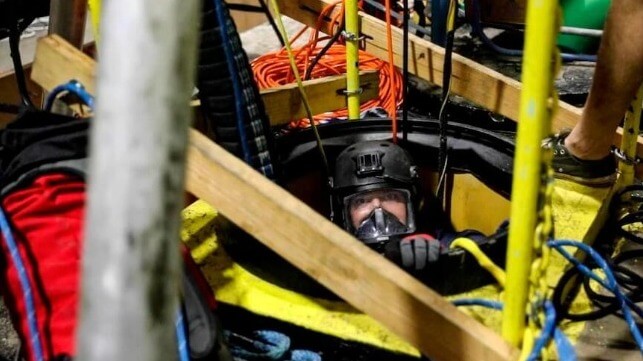Hawaii's Congressmen Introduce Legislation to Shut U.S. Navy Tank Farm

Hawaii's two congressmen have introduced a bill to force the shutdown of the Red Hill Bulk Fuel Storage Facility, the 1940s-era tank farm buried in the hills above Pearl Harbor. Last year, a jet fuel spill inside the facility contaminated a drinking water well for the Navy-operated water supply system that serves Joint Base Pearl Harbor-Hickam, forcing thousands of servicemembers' families to relocate while the Navy works to decontaminate its water mains.
The Honolulu Board of Water Supply is concerned that the spill could threaten an aquifer serving the City of Honolulu, and Hawaii's Department of Health has ordered the Navy to halt operations at Red Hill and to drain its giant tanks for inspection. The service has complied in part, halting fuel transfers, but it is suing the state to block the order to drain the tanks.
In response to the lawsuit, Congressmen Kai Kahele and Ed Case (D-HI) have introduced a bill requiring the facility's closure. It would order the Navy to discontinue all fuel operations at the Red Hill site; defuel all its tanks by the end of 2022; and then permanently shut the facility.
“The Red Hill WAI Act ensures the complete and permanent shut down of the Red Hill Bulk Fuel Storage Facility and requires the United States Navy to defuel the facility by the end of the year,” said Congressman Kaiali?i Kahele. "I have spoken to many families who describe serious illnesses after cooking, bathing, or ingesting tainted water. And still, after several months, there are thousands of families that remain displaced – unable to return to their homes."
In addition, it would require the Navy to reimburse state and local government for costs related to water contamination. Similar legislation is being introduced in the Senate by U.S. Senator Brian Schatz (D-HI).
The Red Hill Bulk Fuel Storage Facility is a unique strategic asset for Navy operations in the Pacific. Between 1940 and 1943, miners carved 20 giant tanks out of a solid basalt ridge outside Honolulu, then connected them by pipeline to the piers at Pearl Harbor. It is among the largest facilities of its kind, containing 250 million gallons of fuel needed to power the Navy's westward reach. The site's elevation provides gravity-assisted flow, and its underground location is harder to hit in the event of an enemy attack.
